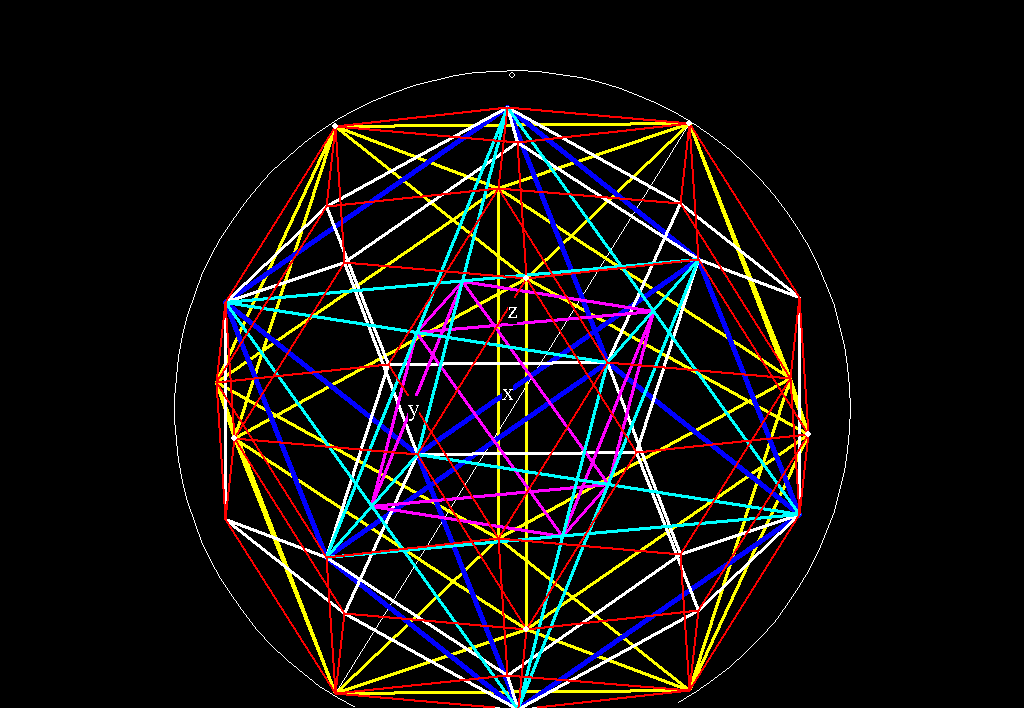 The idea of the Forms, the eidoi in Greek, is perhaps one of the most hotly debated ideas in the corpus of Plato’s work. Plato himself never seems to have concretely defined what he meant in his theory of Forms and the doctrine most often is interpreted as some attempt to account of the multiplicity of the created world. But in this passage in the Republic Bk VI Socrates seems to intimate that he is not setting down so much a doctrine of philosophic thought as a description of a relationship, or proportion. Describing the intelligible section of the divided line he says:
The idea of the Forms, the eidoi in Greek, is perhaps one of the most hotly debated ideas in the corpus of Plato’s work. Plato himself never seems to have concretely defined what he meant in his theory of Forms and the doctrine most often is interpreted as some attempt to account of the multiplicity of the created world. But in this passage in the Republic Bk VI Socrates seems to intimate that he is not setting down so much a doctrine of philosophic thought as a description of a relationship, or proportion. Describing the intelligible section of the divided line he says:There are two subdivisions, in the lower of which the soul uses the figures given by the former division as images; the enquiry can only be hypothetical, and instead of going upwards to a principle descends to the other end; in the higher of the two, the soul passes out of hypotheses, and goes up to a principle which is above hypotheses, making no use of images as in the former case, but proceeding only in and through the ideas themselves.
Socrates here is describing not so much a set doctrine but a relationship to the good which resembles something akin to love. When the soul first sets out to find the Good it examines the multiplicity of mathematical objects that govern the created world and hesitantly assumes certain principles on faith (such as that these mathematical objects are connected, that they are created by a Being that has reality, that there is an order to it all). Yet as the soul moves closer to loving the good it sees not multiplicity but unity and no longer questions the principles which initially led it to pursue the good. Discussing this idea Socrates says of mathematicians that
… although they make use of the visible forms and reason about them, they are thinking not of these, but of the ideals which they resemble; not of the figures which they draw, but of the absolute square and the absolute diameter, and so on --the forms which they draw or make, and which have shadows and reflections in water of their own, are converted by them into images, but they are really seeking to behold the things themselves, which can only be seen with the eye of the mind…
These Forms (the Neteru of the Egyptians) are not so much a thing or set of things to be attained but rather a relationship of harmonious union: the nomad soul drawn erotically toward the God, or conversely, the good intellect of God as it relates to His creations. Conceiving of them as terms or objects (i.e. goodness, truth, beauty, chairness or couchness) only limits them, as though to say that the closeness of lovers can be captured in a sentence or word or image. The minute one tries to define the Neteru one misconceives them and becomes like an outside voyeur attempting to comprehend the intimacy between lovers.

Plato’s consequent refusal to define the Forms seems understandable in this respect. Indeed the esoteric definitions of the Neteru become merely a guide to try and understand what can only be fully understood by direct experience on the part of the individual. The relationship of mathematical objects to Forms is one of unity increasing and multiplicity decreasing even as the soul ascends to love of the Good; the lover and the beloved are one. Descending from this, unity decreases and multiplicity increases until one diminishes to this specific math object governing this specific physical thing. Then descending into the realm of physical things, multiplicity (and consequent decrease in unity and infinity) increases again ending in the images we construct to comprehend those things. Yet all these multifarious objects are merely stepping stones, means to an end which is unity with the Good. As Socrates himself says:
…when I speak of the other division of the intelligible, you will understand me to speak of that other sort of knowledge which reason herself attains by the power of dialectic, using the hypotheses not as first principles, but only as hypotheses --that is to say, as steps and points of departure into a world which is above hypotheses, in order that she may soar beyond them to the first principle of the whole; and clinging to this and then to that which depends on this, by successive steps she descends again without the aid of any sensible object, from ideas, through ideas, and in ideas she ends.
But the discussion is not one of a philosophic doctrine as it is a discussion of the soul’s longing for oneness with the Good; this thing is God and is not God. Deus ubi est? In the discussion there is an implied unbroken chain of being back to the Good itself so that all things are drawn to the God and God becomes all in all. The soul reaches a point where it no longer hypothesizes whether it is loved, nor does it any longer need signs and wonders to prove that it loves the Good or that the Good reciprocates that love. It passes out of the realm of hypothesis into a realm of knowing “which is above hypothesis”; a realm in which the soul knows that it is loved.


No comments:
Post a Comment